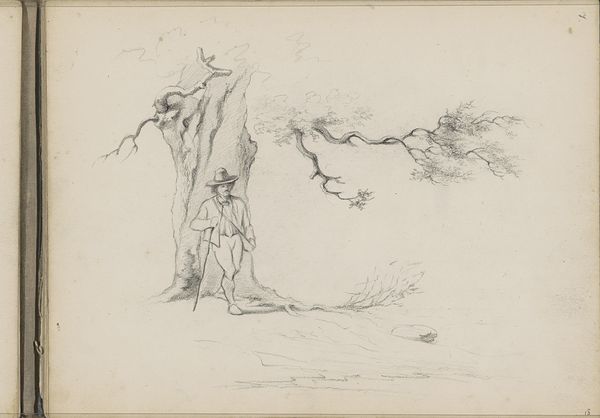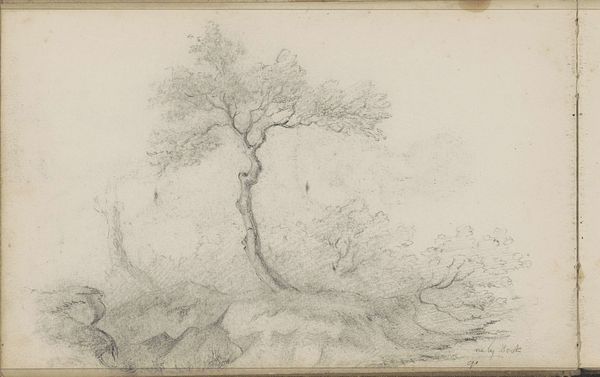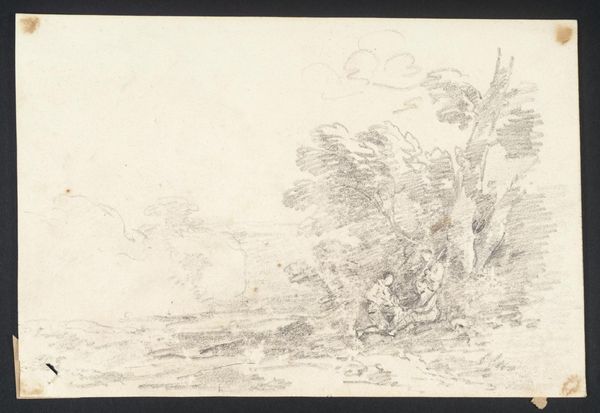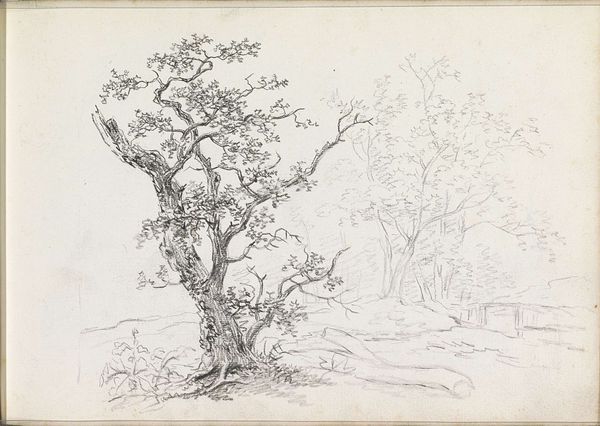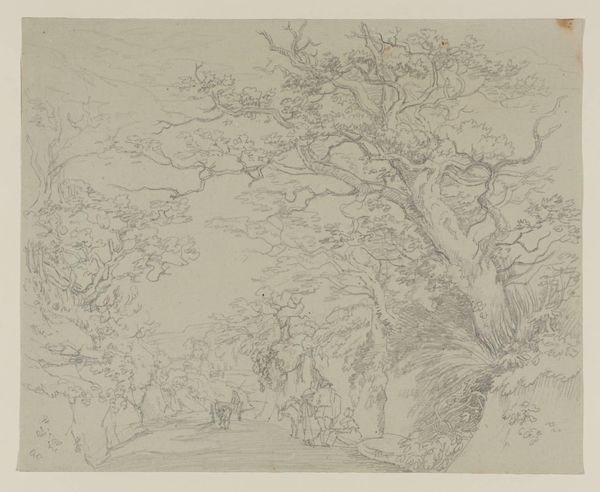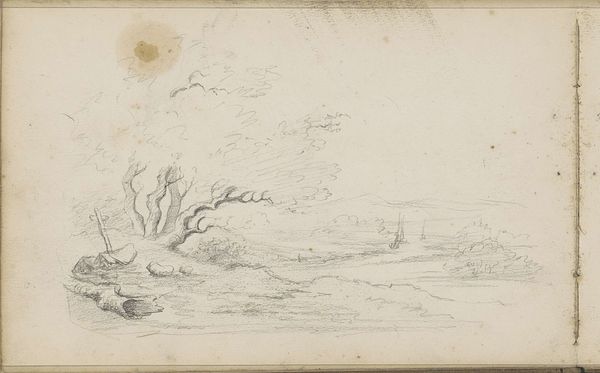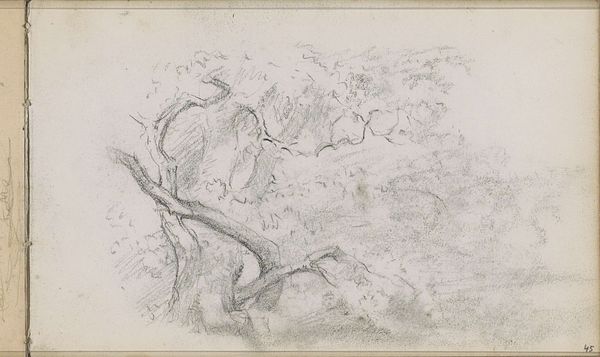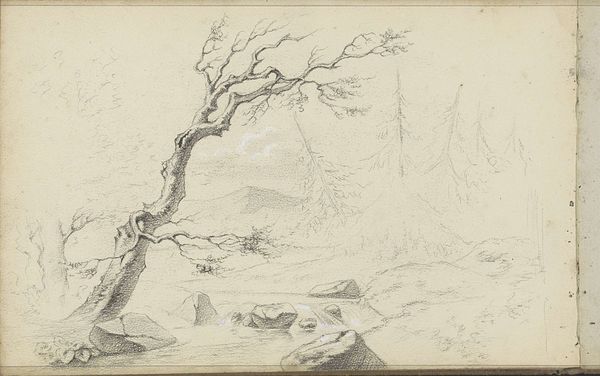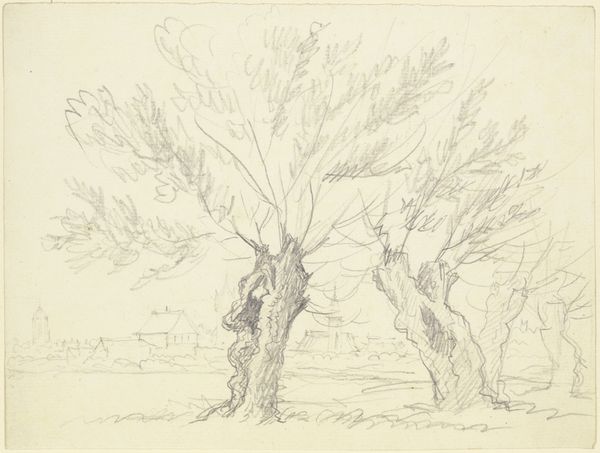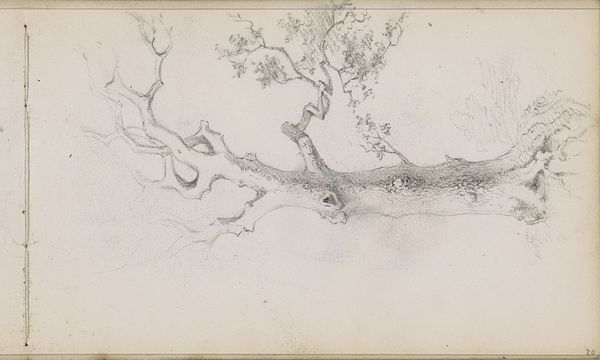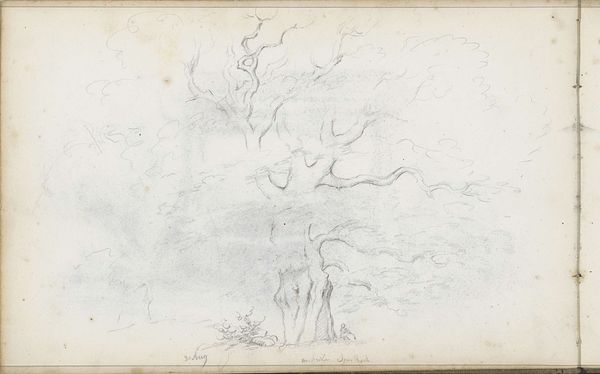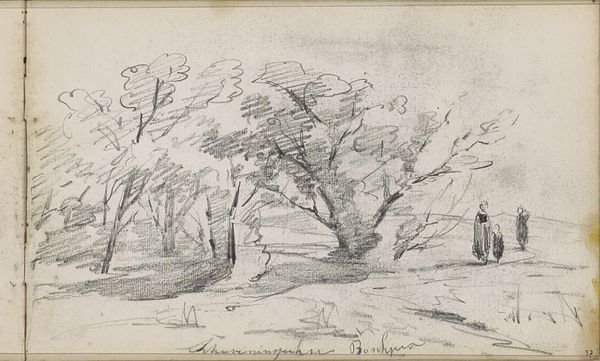
Dimensions: height 184 mm, width 282 mm
Copyright: Rijks Museum: Open Domain
Curator: This drawing, made with pencil around 1874, is titled "Reiziger naast een overhellende boom" which translates to "Traveler Beside a Leaning Tree," and it's by Willem Cornelis Rip. Editor: It feels stark, almost desolate. The way the tree bends dramatically suggests a powerful wind, yet the lone figure appears small and somewhat unaffected, gazing towards the distance. There's a sense of precariousness to it, materially evoked in the frailty of the drawing itself. Curator: I agree, the pencil work creates a kind of immediacy. We can almost see the artist making swift marks to capture the dynamic quality of the scene. There's a social element present as well; during the Romantic era and even stretching towards Realism, depictions of the landscape often spoke to man's relationship to nature and ideas about nationalism. Rip may have been working in a Realist mode, but there’s still some romanticization present here. Editor: Absolutely, and it raises questions about whose gaze is being centered. The composition itself almost places the viewer as an observer in an institution, gazing into this "natural" world mediated by Rip's drawing and the conventions of the art market. Did Rip expect it to be appreciated by someone outside of art institutions, or those invested in the art economy? Curator: It certainly speaks to the prevailing visual culture, particularly how drawing played a role in preliminary studies, works meant for production and commercial circulation. One can imagine how this could have served Rip as preparation for a larger painting. I also wonder about his process – was this sketching "en plein air," and what sort of labor does that physical and environmental engagement entail for the artist, who may be positioned or position himself as a privileged witness? Editor: I think by acknowledging its place in art's lineage and Rip's own institutional context as a trained artist, we appreciate the choices embedded in its creation. The "naturalness" isn't simply transcribed but is manufactured, in a way. Curator: Well, thanks for lending that perspective. Thinking about the materials, the socio-historical situation, and even artistic choices help enrich the overall picture, beyond simply just its aesthetic charm. Editor: Agreed. Examining art through the lens of its history helps us reflect not only on its origins, but also the ever-evolving reception in culture.
Comments
No comments
Be the first to comment and join the conversation on the ultimate creative platform.
